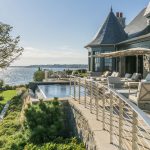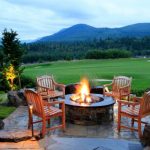How to Make Hot Tubs More Energy-Efficient
After months of planning, consultations, and pool installations, you finally have your dream backyard! From the latest entertainment system to your new hot tub, everything seems perfect until you look at your next electricity bill.
Not surprisingly, most hot tub owners can expect an increase in monthly expenses due to the latest backyard addition. However, this surge does not have to be astronomical because you can employ energy-efficient tactics. Curated by the No.1 pool company in the northeast, here are some energy-efficient tips for running your hot tub.
Check Your Hot Tub’s Settings
Unless you plan to soak in your new hot tub 24/7, it does not have to run at full capacity all the time. After you finish using the hot tub, remember to turn off every setting such as jets, blowers, and lights to reduce energy usage. Failing to do so may contribute to higher energy use as your hot tub works against features, such as blowers, to maintain the set temperature.
Temperature is Key
Consider lowering the water temperature a few degrees when the hot tub is not in use. This step may seem minuscule, but the slight temperature difference will help with lowering energy consumption. Reducing the hot tub’s temperature is especially important when away on vacation or in the off-season. Why let your hot tub become an energy hog if you are not there to enjoy it?
Furthermore, check the hot tub settings to see if it boasts a vacation or economy mode. These energy-efficient modes will set the temperature to the optimal level automatically. This way, you do not have to waste energy by completely restarting the heating process after a long trip.
If you plan on using the hot tub several times a week, you will want to keep the water temperature consistent rather than adjusting it during each soaking session. Hot tubs consume extra energy (and time) to reheat the water. Thus, you can save precious dollars by keeping your hot tub at a preferred soaking temperature.
Adjust According to the Weather
If you want an energy-efficient hot tub, you should also consider external factors affecting your tub. Weather plays an instrumental role in maintaining water temperature. For example, hot tubs will use more energy to retain their temperature in colder seasons than in warmer seasons.
Sure, you cannot control the weather, but you can still take measures to protect your hot tub. Is yours portable? If so, consider moving the tub to an area that blocks windy weather, such as under a roof or near some fences. Otherwise, you may want to consider having installations, like privacy panels, around your hot tub if you think the wind will become an ongoing issue.
Invest in Energy-Efficient Pool Covers
Insulation and covers are your best friend when it comes to maintaining an energy-efficient tub. Since warm air tends to rise, the heat will escape through the top of your hot tub. This, in turn, increases energy consumption since the heaters work overtime to keep the water warm.
So, make sure your hot tub cover correctly seals any sources of leaks and there is no damage. If you have any doubts about the cover’s condition, try investing in a high-quality cover (sooner rather than later) to save money in the long run.
Maintenance Checks
Your work does not end once you finish installing the hot tub. You must regularly check the condition of your whole hot tub. Ask yourself when you last cleaned the filter or checked the pumps. Any abnormalities or damage can deter your efforts in maintaining an energy-efficient hot tub since it may have to use more energy to push through worn-out filters or outdated technology.
Energy-Efficient Backyard Services at Shoreline Pools
If you need an upgrade on any of your features or components, Shoreline Pools boasts a team of pool professionals who are well-versed in energy-efficient technologies. Rest assured that the Shoreline Pool team can reduce your environmental impact as well as curb unnecessary spending on your next electricity bill. Call today at (203) 357-1544 for more information on how you can build an energy-efficient backyard.





